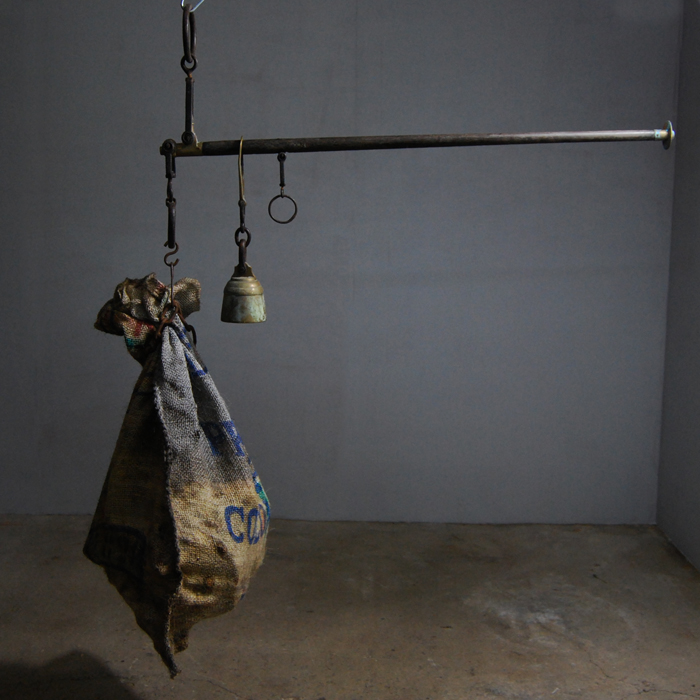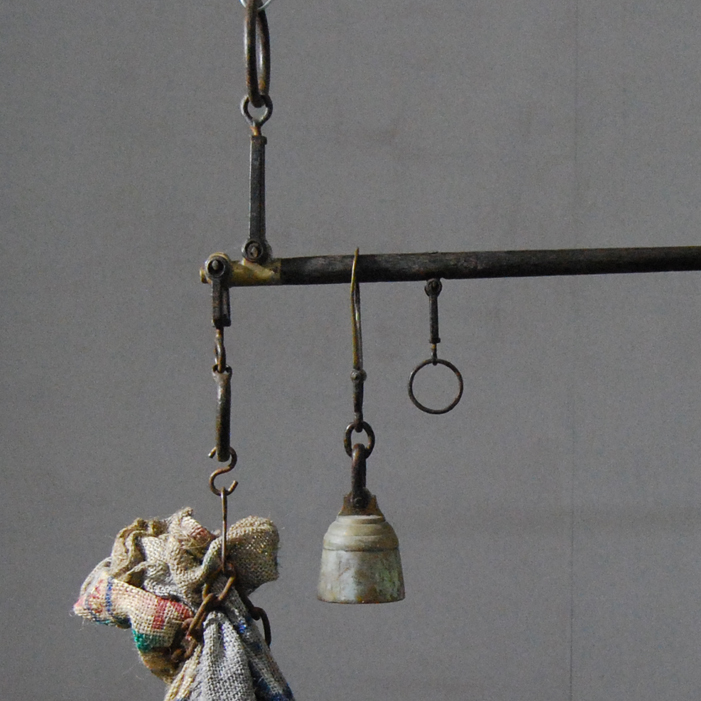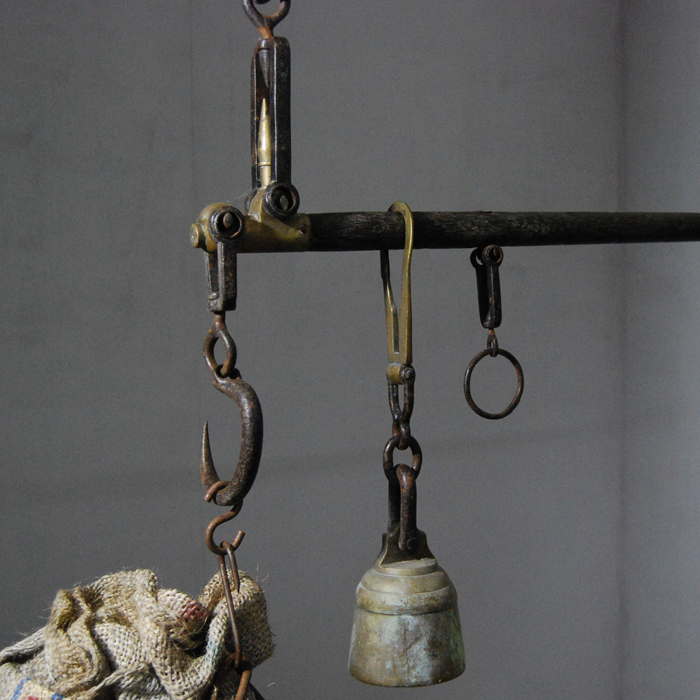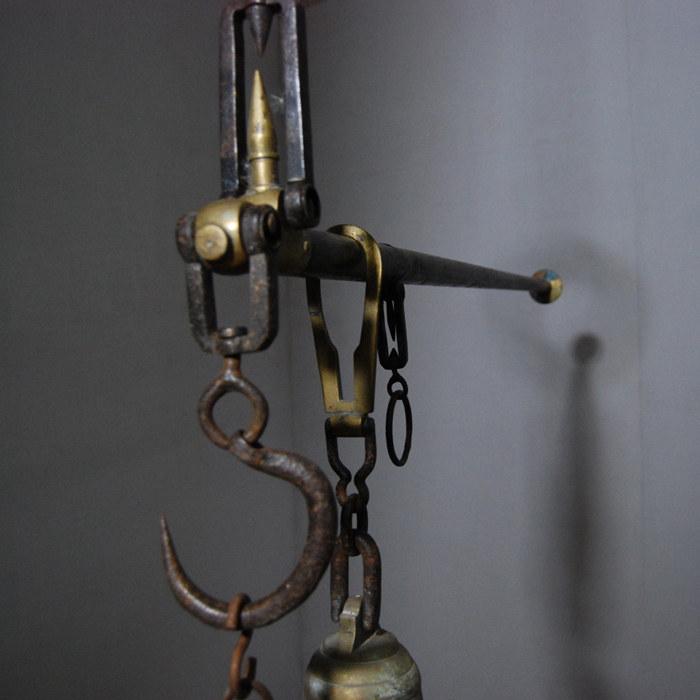Archived Stock - This item is no longer available
A Victorian brass mounted wrought iron and elm steelyard balance,
the brass weight sliding on the tapered arm with subtle notches of wear, with wrought suspension hooks and precisely cast brass fittings, the brass weight = 3.95kg,
SOLD OUT
In stock
Pictured here weighing a sack of bricks of 20kg. (Sack of bricks not included).
A steelyard balance (or steelyard, or stilyard - also known as a Roman steelyard or Roman balance) is defined as a straight-beam balance with arms of unequal length. It incorporates a counterweight which slides along the longer arm to counterbalance the load and indicate its weight. It exemplifies the law of the lever, wherein, when balanced, the weight of the object being weighed, multiplied by the length of the short balance arm to which it is attached, is equal to the weight of the counterweight multiplied by the distance of the counterweight from the pivot.
The steelyard was in use among Greek craftsmen of the 5th and 4th centuries BC, even before Archimedes demonstrated the law of the lever. And Roman and Chinese steelyards were independently invented around 200 BC. The Oxford English Dictionary suggests that the name "steelyard" is derived from steel combined with yard, influenced by a "misunderstood" allusion to the Steelyard, the main trading base of the Hanseatic League in London in the 14th century.
Large steelyard balances (known as cart balances), both public and private, were a common feature in agricultural areas in England from the eighteenth century forward. An example of a public cart steelyard remains at Soham, Cambridgeshire and another is to be seen at Woodbridge, Suffolk.
Recently Viewed Items
-

Bronze model of Diana the Huntress
£1,500Bronze model of Diana the Huntress
French c.1900, after the original by Jean-Antoine Houdon (1741-1828)£1,500




